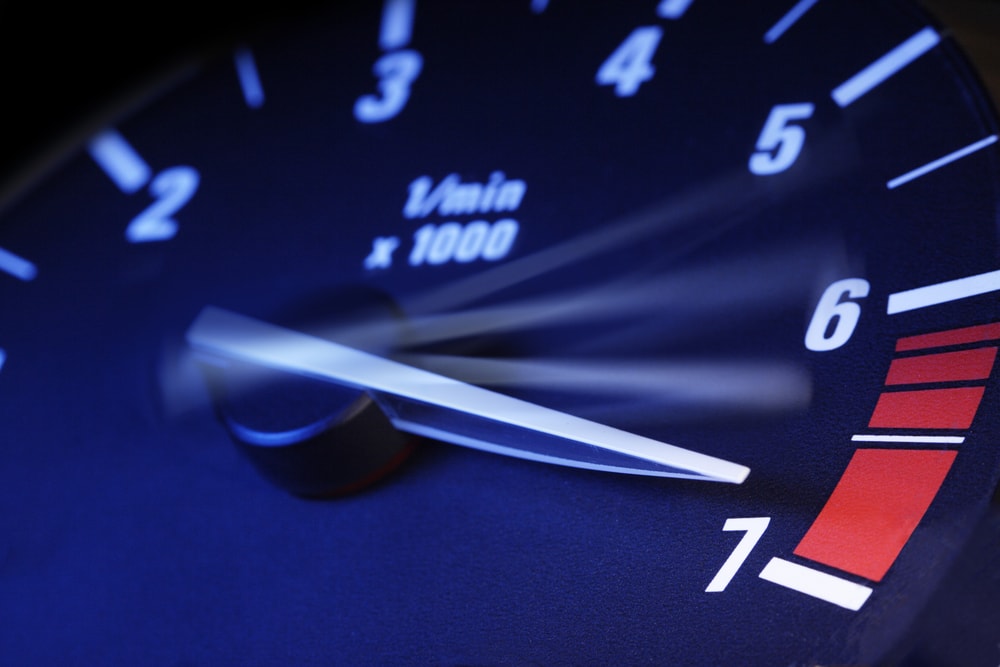
When is a Tachometer Required for Precision Monitoring?
Share
If you are a tech professional or a tech enthusiast, you may often find yourself asking, 'when is a tachometer required?' This question not only highlights the significance of this device in various applications but also underscores the importance of understanding its functional role. A tachometer is a vital instrument for measuring the rotation speed of an object, typically in revolutions per minute (RPM). It is commonly used in both mechanical and digital formats across automotive, aerospace, and industrial sectors.
Understanding the applications and scenarios where a tachometer is necessary can significantly aid in making informed decisions about equipment and performance monitoring. In this article, we will delve deep into the circumstances that necessitate the use of a tachometer, ensuring that you have a comprehensive understanding of its role in various settings.

What is a Tachometer?
A tachometer is an instrument designed to measure the rotational speed of a shaft or rotor. It serves various purposes across industries, including automotive, aviation, and manufacturing. By providing real-time feedback on an engine's performance, it allows operators to optimize performance and prevent potential damage. For more detailed information on the history and evolution of tachometers, you can visit Britannica.
Why Are Tachometers Important in Specific Applications?
Understanding when is a tachometer required hinges on recognizing the importance of monitoring RPM in different applications. Here are key sectors where tachometers play a crucial role:
1. Automotive Industry
Tachometers are essential in vehicles as they allow drivers to monitor engine speed. High RPM can lead to engine strain, while low RPMs can adversely affect fuel efficiency. In a car's dashboard, the tachometer provides valuable insights, helping drivers maintain optimal speed. For more information on how drivers utilize tachometers effectively, you can refer to this guide on Using Inductive Tachometers.
2. Aerospace Applications
In the aerospace sector, tachometers are vital for monitoring the performance of various components such as turbines and rotors. In this high-stakes environment, precise RPM readings are crucial for ensuring safety and reliability. For those interested in how tachometers are integrated into aerospace technology, check this resource on Tachometers in Aerospace.
3. Manufacturing Processes
Many manufacturing machines rely on tachometers to monitor production rates and machinery performance. In settings that involve conveyor belts and rotating machinery, a tachometer helps optimize processes and maintain quality control. Understanding machine dynamics can greatly benefit from a detailed look at tachometer applications in manufacturing, which you can read about at What is a Tachometer?.
Types of Tachometers
Tachometers come in different forms, each suited for specific applications.
1. Mechanical Tachometers
These operate based on the centrifugal force created by a rotating shaft. Mechanical tachometers are widely used in older vehicles, providing a reliable indication of engine speed.
2. Digital Tachometers
Digital tachometers deliver more accurate readings, are easier to read, and often include additional features like logging capabilities. In modern vehicles and machinery, digital tachometers are more common due to their accuracy and ease of integration. To understand how to hook up digital tachometers effectively, you may find it helpful to visit Hooking Up a Tachometer.
3. Photo Tachometers
Photo tachometers utilize laser technology for precise RPM measurements, primarily used in applications requiring high accuracy. This type of tachometer is favored in research and advanced engineering projects. For insights on using photo tachometers, see Using a Photo Tachometer.
When is a Tachometer Required?
Now, lets get into the critical considerations that dictate the necessity of a tachometer.
1. Engine Monitoring for Safety
A tachometer is indispensable when monitoring engine performance to prevent over-revving, which can lead to significant damage. In both everyday vehicles and high-performance engines, tachometers deliver real-time feedback, helping operators stay within safe operational parameters.
2. Performance Tuning
For tech-savvies involved in vehicle tuning or performance modification, understanding when is a tachometer required is especially crucial. A tachometer enables users to calibrate performance improvements effectively, ensuring that modifications yield the desired results without compromising engine health.
3. Industrial Process Control
In industrial settings, processes often require precise operational speed for consistency and quality. A tachometer assists operators in achieving and maintaining the required RPM levels to ensure equipment operates efficiently.
Operating a Tachometer
Once you understand when to utilize a tachometer, knowing how to operate it becomes crucial. Here are some key points to consider:
1. Accurate Calibration
Ensure that your tachometer is calibrated correctly to avoid inaccurate RPM readings.
2. Consistent Monitoring
Regularly check readings to maintain a close eye on engine health or machine performance.
3. Data Logging
Many digital tachometers now offer data logging capabilities to help track performance trends over time, which can be invaluable for analysis.

Frequently Asked Questions (FAQ)
1. Why should I use a tachometer?
A tachometer helps monitor RPM to prevent engine damage and optimize performance during operation.
2. Can I use a tachometer on any vehicle?
Most modern and older vehicles can accommodate a tachometer, but installation may vary based on the vehicle type.
3. Is a digital tachometer better than a mechanical one?
In general, digital tachometers provide more accurate and easier-to-read information compared to mechanical versions.
In conclusion, understanding when is a tachometer required can lead to better performance monitoring across various applications. For more insights into this topic, don't miss exploring The Red Section of a Tachometer. Whether you are in automotive, aerospace, or manufacturing, a tachometer is an integral part of ensuring operational efficiency and effectiveness.
